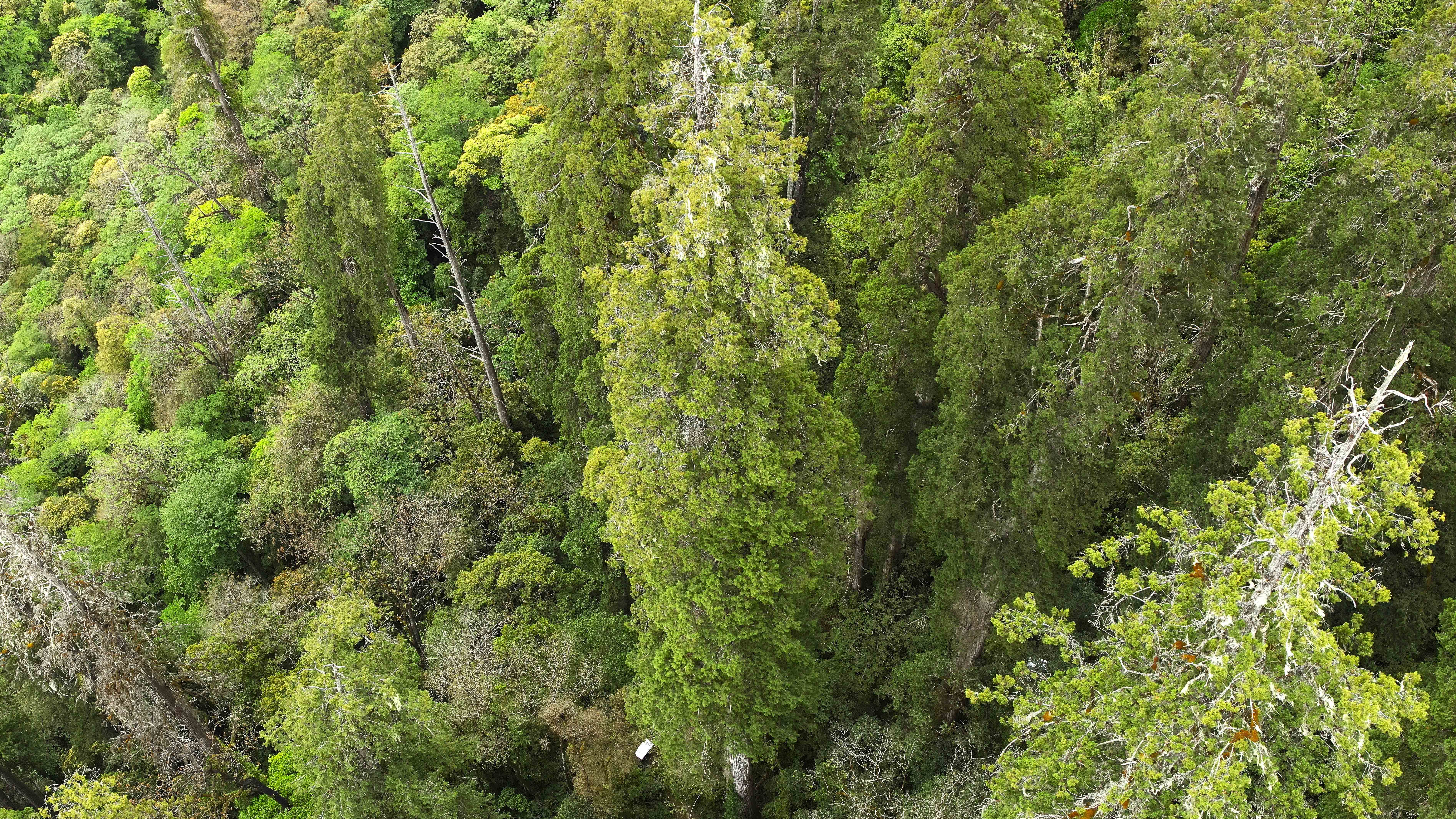
A gigantic cypress tree found in a canyon in Tibet stands as the tallest tree ever discovered in Asia and the second tallest in the world.
The tree, measuring over 335ft in height and nearly 9.2ft in girth was discovered in May in Bome County’s Nyingchi city in Tibet, according to researchers, including Wang Zi from the Chinese Academy of Sciences (CAS).
The exact species of the tree remains unclear, but China’s state media hinted it could either be a Himalayan cypress (Cupressus torulosa) or a Tibetan cypress (Cupressus gigantea).
Scientists have been revising the record of the tallest tree in Asia several times over the past year.
In April last year, Peking University scientists found a 252ft tree in Medog County in Tibet, which had briefly become China’s tallest tree.
This record was then broken the following year when an 274ft tree was found in Zayu County.
The discovery of the 335ft-tall tree last month, however, has refreshed the Asian record for the tallest tree once more.

All these trees share the common feature of being discovered within Nyingchi city – a region under the focus of conservation efforts due to its unique ecosystem.
Along with the 335ft-tall tree, scientists also discovered a large number of giant trees of over 279ft in height in the area, of which 25 of them were found to be taller than 295ft.
This points to the place as the region with the highest height and distribution density of giant trees in China.
Such places that allow for giant trees to grow are extremely rare on the planet because these trees require suitable soil and climate conditions and also need to stay safe from wind, fire, lightning and human interference.
With the new finding, the record for the tallest tree in Asia has also been surpassed.
This was previously held by Menara in Malaysia – a yellow meranti (Shorea faguetiana) tree with a height of about 331ft.
Scientists reportedly used drones as well as radar and laser equipment to map out trees in the area and estimate their heights.
They developed a 3D model of the cypress tree to measure its dimensions accurately, according to Livescience.
They have called for more scientists to further assess the region and carry out more in-depth studies on its biodiversity.







